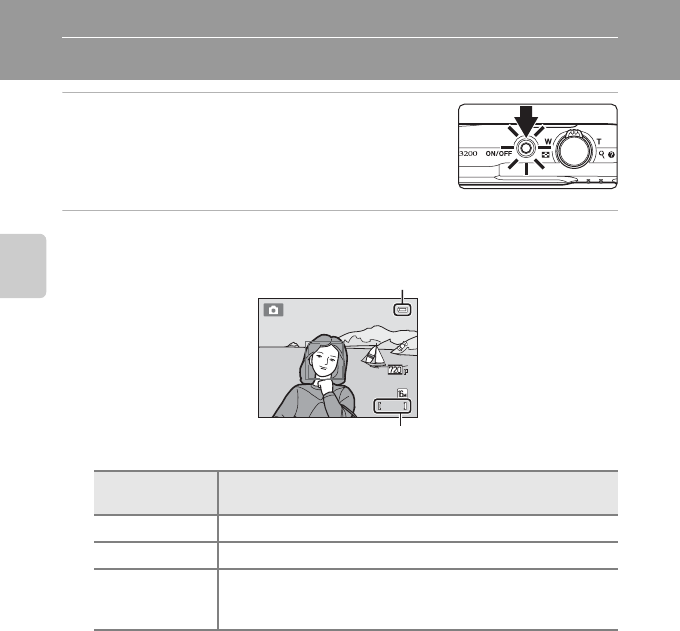user manual
Table Of Contents
- Introduction
- Parts of the Camera and Basic Operation
- Basic Steps for Shooting and Playback
- Shooting Features
- Auto Mode
- Scene Mode (Shooting Suited to Scenes)
- Special Effects Mode (Applying Effects When Shooting)
- Smart Portrait Mode (Capturing Images of Smiling Faces)
- Features That Can Be Set Using the Multi Selector
- Changing the Image Size (Image Mode)
- Functions That Cannot Be Applied Simultaneously
- Face Detection
- Skin Softening
- Focus Lock
- Playback Features
- Recording and Playing Back Movies
- General Camera Setup
- Reference Section
- Using Panorama Assist
- Favorite Pictures Mode
- Auto Sort Mode
- List by Date Mode
- Editing Images (Still Images)
- Editing Functions
- Quick Retouch: Enhancing Contrast and Saturation
- D-Lighting: Enhancing Brightness and Contrast
- Glamour Retouch: Softening Skin and Making Faces Looking Smaller with Larger Eyes
- Filter Effects: Applying Digital Filter Effects
- Small Picture: Reducing Image Size
- Crop: Creating a Cropped Copy
- Connecting the Camera to a TV (Playback on a TV)
- Connecting the Camera to a Printer (Direct Print)
- The Shooting Menu (for Auto Mode)
- Smart Portrait Menu
- The Playback Menu
- The Movie Menu
- The Setup Menu
- Image/Sound File and Folder Names
- Optional Accessories
- Error Messages
- Technical Notes and Index

20
Basic Steps for Shooting and Playback
Step 1 Turn the Camera On
1 Press the power switch to turn on the camera.
• If you are turning the camera on for the first time
after purchase, see “Setting Display Language,
Date and Time” (A22).
• The lens extends and the monitor turns on.
2 Check the battery level indicator and the number of exposures
remaining.
Number of Exposures Remaining
The number of images that can be captured is displayed.
• If a memory card is not inserted, C is displayed to indicate that images will be saved
in the camera’s internal memory (approximately 42 MB).
• The number of exposures remaining depends on the remaining capacity of the
internal memory or memory card, and the image quality and image size (image
mode) (A61).
• The number of exposures remaining shown in the illustrations may differ from the
actual display.
Battery level
indicator
Description
b Battery level is high.
B Battery level is low. Prepare to charge or replace the battery.
N
Battery
exhausted.
The camera cannot take pictures. Charge or replace the battery.
9 5 0
950
8 m 0 s
8 m 0s
Battery level indicator
Number of exposures remaining










